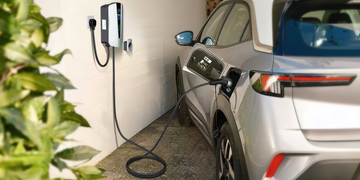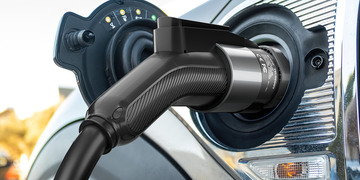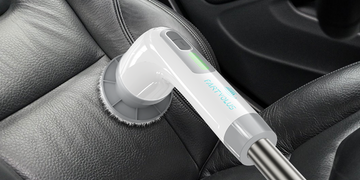What is L1 L2 L3 charging? There are three levels of charging, L1, L2, and L3. L1 and L2 will supply AC and then, with the help of an onboarding converter, convert that AC into DC. At the same time, L3 will directly supply DC to the EVs.
As electric vehicles (EVs) become increasingly prevalent, understanding the different charging levels is crucial for both current and prospective EV owners. The three primary charging levels, commonly referred to as L1, L2, and L3, represent varying charging speeds and infrastructure requirements. In this article, we'll delve into what L1, L2, and L3 charging mean and how they impact the charging experience for electric vehicle users.
What are the Different Types of Electric Vehicles Chargers?
Level 1 Charging (L1):
Level 1 charging is the most basic and widely available form of electric vehicle charging. It utilizes a standard household electrical outlet with a voltage of 120 volts. L1 chargers are often included with the purchase of an electric vehicle and are designed for convenient residential use. These chargers are characterized by a lower charging power, typically delivering around 2 to 5 miles of range per hour. L1 charging is suitable for overnight charging, making it a practical option for maintaining daily driving needs.
Level 2 Charging (L2):
Level 2 charging represents a significant step up in charging speed compared to L1. These chargers require a 240-volt power source, similar to what is used for larger home appliances like electric dryers or stoves. L2 chargers are commonly found in public charging stations, workplaces, and some residential settings. The increased voltage allows for faster charging, with power levels ranging from 3.3 kW to 19.2 kW. Depending on the charger's power, L2 chargers can provide approximately 10 to 60 miles of range per hour. This level of charging is suitable for various scenarios, from daily commuting to longer trips.
Level 3 Charging (L3) - DC Fast Charging:
Level 3 charging, also known as DC fast charging, is the fastest and most powerful charging level currently available for electric vehicles. Unlike L1 and L2 chargers, which use alternating current (AC), L3 chargers utilize direct current (DC). This technology enables significantly faster charging rates, making L3 chargers ideal for on-the-go charging, especially during long-distance travel. L3 chargers can deliver charging power ranging from 20 kW to 350 kW or more, providing rapid charging rates of up to 250 miles of range in 30 minutes.
EV Charging Levels Explained
There are two types of charging stations, one that supplies AC and the other that supplies DC. Battery always stores the energy as DC, and so even if AC is being received, a conversion takes place before it gets stored in the battery. So, Dc directly goes to the battery, while AC goes to the onboarding charging slot/converter as shown in the diagram above and is then converted into DC for storage.

There are three levels of charging, L1, L2, and L3. L1 and L2 will supply AC and then, with the help of an onboarding converter, convert that AC into DC. At the same time, L3 will directly supply DC to the EVs. To avoid any confusion, here’s a fact!
AC is the type of current that is received at any station, but while in L1 and L2 charging, the AC is directly supplied, in L3, a converter present at the station itself converts the AC to DC and directly charges the EV with DC as required. L3 is the level that involves fast charging, as it reduces the time-consuming conversion of AC to DC.
How to Charge Your Electric Vehicle According to Level
The three levels of charging are also known as the home level, business level, and fast level of charging. It is because L1 refers to the slow chargers that are used at home. L2 corresponds to the chargers used at stations available in public places, and L3 corresponds to the charging received at the stations equipped with rapid chargers. Since they directly supply DC, they are the rapid chargers. The other options running on AC are comparatively slower.
Rapid chargers charge the EVs fast, then drops the rate constantly till the battery reaches 80% and then becomes slow for the remaining 20%; the AC chargers, however, have a steady rate, which is less than DC chargers till 80% and then slows down at a linear rate for the remaining 20%.
How to Choose the Right EV Charger for Your Needs
Now that you are familiar with the basics of charging and the levels of charging, it is easier for you to make a choice. The first and foremost thing is the time taken during the charging. Ideally, a person would prefer a rapid charger with an L3 level of charging because it is fast, but with time follows the convenience and even bigger challenge, compatibility.
What is L1 L2 L3 charging? In summary, L1, L2, and L3 charging represent the three main levels of electric vehicle charging, each offering distinct charging speeds and applications. L1 chargers are designed for residential use, L2 chargers provide faster charging for various locations, and L3 chargers offer rapid charging capabilities, especially suited for long-distance travel. As the electric vehicle market continues to grow, understanding these charging levels is essential for optimizing the charging experience and expanding the accessibility of electric transportation.





